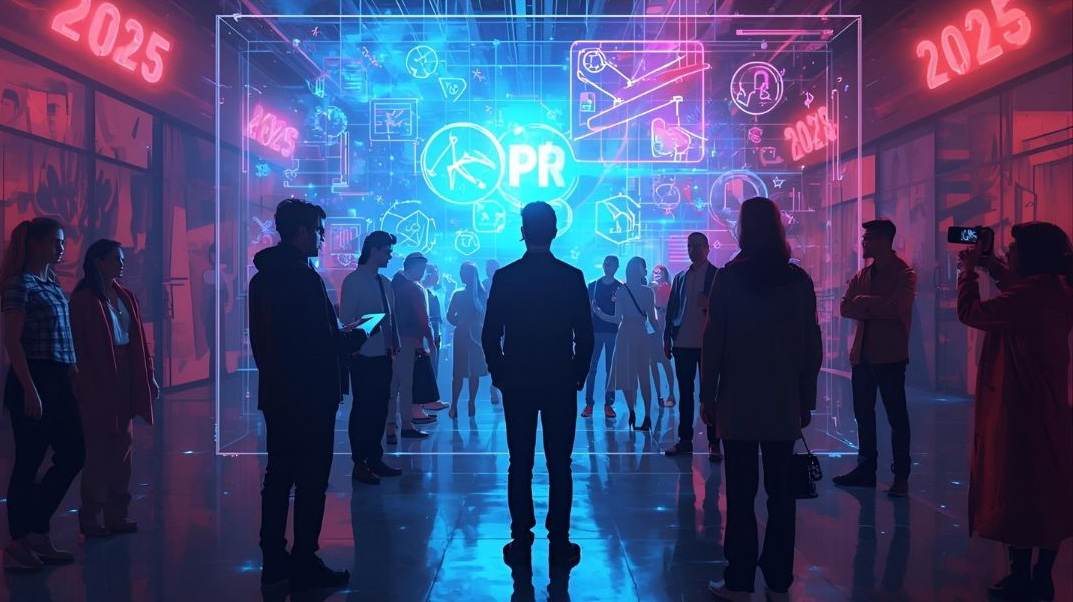
PR in 2025: The chasmic changes and trusty traditional methods that still work
2nd September 2025 by Kate Logan
It’s already September! We know, we can’t believe it either. As we hurtle towards the last quarter of 2025, it’s time to look back on what’s been one of the most pivotal years in the industry, well, ever.
PR has changed. We say it every year but this time it feels more pertinent than ever. Press releases still have their place, but they aren’t enough anymore. In 2025, brand communications have become more visual and data-driven. And, in a world where it feels AI is taking over, there is a need to be as human as possible, to retain trust and authenticity.
With our focus here at Active PR on the property and construction industry, we look at the lessons we’ve learnt this year and the innovations brands can take on board.
1. AI can guide but humans must decide
“Never start with a blank page” is about the best piece of AI-related advice I’ve been given this year. It’s the personal assistant we’ve all always dreamed of, helping to boost productivity but it still needs a human guide.
AI is brilliant at spotting trends, generating all manner of content and giving a steer on just about everything, but it hasn’t yet overtaken human judgment or creativity. You get out what you put in and, most important to remember in this business, it’s not always accurate.
It’s still up to us to provide the creative input and context to generate a meaningful output and do due diligence on its output. One AI expert recently told me AI is still “the wild west” and human judgement is as important as it’s ever been. This is particularly true in the field of public relations, where a brand’s reputation and credibility are at stake.
2. Creators add credibility
The days of bringing in a big-name celebrity to endorse your brand or product may be numbered. People build trust through meaningful interactions and find connections with influencers and creators online who reflect their own lives, interests and values.
Reach was once deemed the sole indicator of value and now trust matters more. Smaller creators are often more influential than celebrities because they’re relatable. For housing developers, that could mean partnering with local voices who understand the community and can tell the story authentically. One client recently told me they’d seen their biggest spike in enquiries from an Instagram reel by a hyperlocal influencer with a following of less than 50k.
3. Visuals that create impact
Construction and property are visual industries, so it stands to reason thattheir communication should be too. This year we’ve had success selling in stories to media with drone film footage, virtual walkthroughs and aerial images, while customer stories with a human face have been as popular as ever. Filming tends to be more expensive than still photography, yet it’s often worth the investment as it can make an impact across multiple platforms and through both earned and owned content.
4. Sustainability leads the story
Green credentials are front and centre of our clients’ business goals. Consumers and stakeholders expect to see this messaging across all comms. From low-carbon technology and biodiversity to support for community groups working to make their environment greener, communication around sustainable developments, backed up with evidence, is now key to building a strong reputation.
5. Using your people as storytellers
This is a well-trodden path that still rings as true as ever in 2025. If you want to engage journalists and the public, then your people, including leaders of your business, need to be the face and voice of your brand. A well-thought-out media comment from a managing director or interior designer can often make a bigger impact than a traditional press release. Position them as experts in their field and don’t be afraid to show their human side, whether it’s in a LinkedIn post, press release quote or through a thought leadership article.
6. Case studies build trust
Trusty case studies remain one of the strongest tools in our PR locker. This can be a focus on a client’s latest product or development to showcase how they stand out in the market or how they are making a difference to local communities.
Or it can be a testimonial from a purchaser to provide a third-party endorsement for a company. Again, this is all about helping potential customers to trust in a brand, when they hear from others who’ve experienced it firsthand. And they make great human-interest content for socials too.
To sum up, PR in 2025 is faster and more visual than ever. For the property and construction industries, it’s an opportunity to combine great images and film with authentic stories, to build a communications strategy that really stands out. The impact of AI as a tool to become more productive and support creative thinking is undeniable, but there’s a need to retain the human touch to make real connections and meaningful engagement.
It’s a little early to say this, but we already can’t wait to see what 2026 brings!












